Fluorescent tube lights work by using an electric current to excite mercury vapor inside the tube, which produces ultraviolet (UV) light. This UV light then causes a phosphor coating on the inside of the tube to glow, producing visible light. Before finding out how fluorescent tubelights work, let’s see what components are used in fluorescent tube lights.

Working Principle of Florescent tube
Here is the exact concept on How Florescent tubelights works –
- Initiation of Current: When the light is switched on, the ballast provides a high initial voltage to the electrodes. If a starter is used, it temporarily connects the two electrodes, allowing current to flow through the inert gas.
- Electrode Heating: The current heats the electrodes, causing them to emit electrons into the tube.
- Ionization of Gas: The emitted electrons collide with the mercury atoms, ionizing them and creating a plasma. This ionization process releases more electrons, creating a flow of current through the gas.
- UV Light Production: As electrons collide with the mercury atoms, they excite the mercury electrons to higher energy levels. When these excited electrons return to their lower energy states, they release energy in the form of ultraviolet (UV) light.
- Fluorescence: The UV light emitted by the mercury vapor is absorbed by the phosphor coating on the inside of the tube. The phosphor atoms become excited and then emit visible light as they return to their normal states.
- Steady-State Operation: Once the lamp is fully ignited, the ballast reduces the voltage to a lower level sufficient to maintain the discharge. The lamp continues to emit visible light as long as the current flows through the tube.
Components of a Fluorescent Tube Light
Tube: The glass tube is sealed at both ends and contains a small amount of mercury vapor and an inert gas, usually argon or krypton.

Electrodes: Each end of the tube has an electrode (or cathode), which is coated with an electron-emissive material.
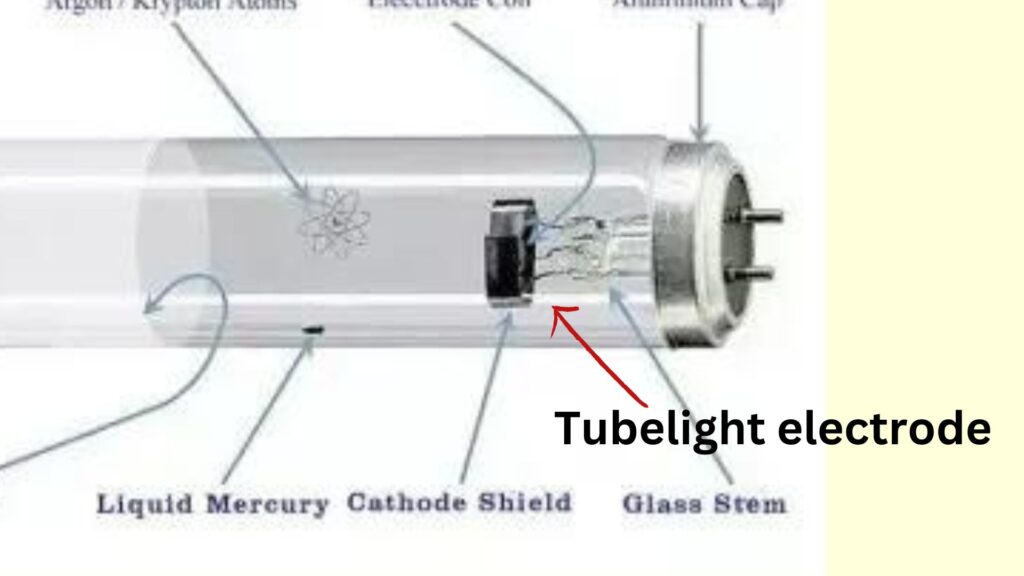
Phosphor Coating: The inside surface of the tube is coated with a phosphor material that fluoresces when exposed to UV light.
Ballast: This device regulates the current to the fluorescent lamp and provides sufficient voltage to start the lamp.
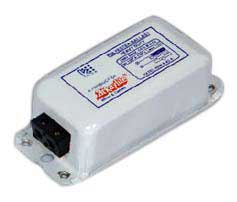
Starter: Some fluorescent lamps have a starter to help initiate the discharge process.
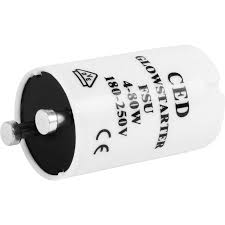
Mercury: Fluorescent tubelights operate by a process known as gas discharge. Inside the tube, there is a low-pressure mercury vapor, along with an inert gas like argon or krypton. When an electric current is passed through the tube, it energizes the mercury vapor. This excitation causes the mercury atoms to emit ultraviolet (UV) light, primarily at wavelengths of 254 nm and 185 nm. When the UV light emitted by the mercury vapor strikes the phosphor coating, it causes the phosphor to fluoresce, emitting visible light.
Krypton or Argon gas: Fluorescent tubes contain a low-pressure inert gas, usually argon or krypton, which helps to start the lamp. When the lamp is turned on, an electric current flows through the gas, ionizing it and making it conductive.
Read – All types of tubelights available in the market
Connection diagram
Here is the connection diagram showing how a fluorescent tube works.
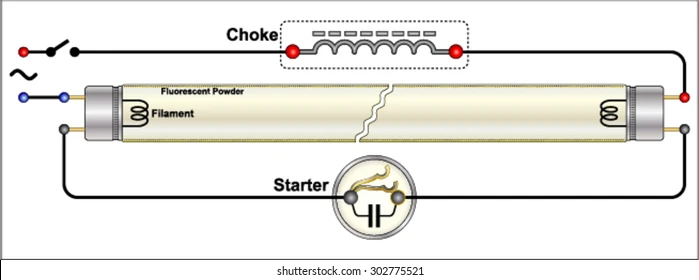
Credit – Shutterstock.com
Holder used in Florescent tubelight connection
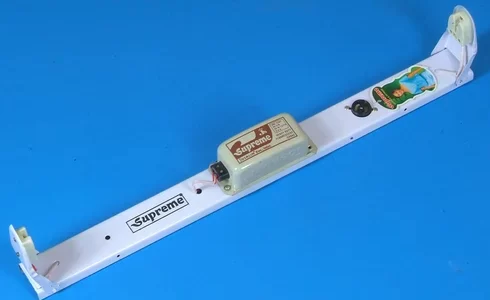
Fluorescent tube lights typically use bi-pin sockets as their holders. These sockets come in various types to accommodate different sizes and configurations of fluorescent tubes. The most common types are:
- T8 Sockets (G13): Used for T8 fluorescent tubes, which are 1 inch (25.4 mm) in diameter. The “G13” designation refers to the 13 mm spacing between the two pins.
- T12 Sockets (G13): Used for T12 fluorescent tubes, which are 1.5 inches (38.1 mm) in diameter. Also uses the G13 bi-pin configuration.
- T5 Sockets (G5): Used for T5 fluorescent tubes, which are 5/8 inch (16 mm) in diameter. The “G5” designation refers to the 5 mm spacing between the two pins.
Maintenance tips

Here are some safe maintenance tips for fluorescent tube lamps.
- Regular Cleaning: Turn off power before cleaning. Use a soft, dry cloth to remove dust.
- Inspect and Replace Tubes: Replace flickering or dim tubes. Dispose of old tubes properly.
- Check Starters: Replace if the tube is slow to start or flickers.Maintain Ballasts: Ensure ballasts are functioning properly. Replace faulty ballasts.
- Secure Connections: Ensure tubes are securely fitted in sockets. Inspect and replace damaged wiring.
- Handle with Care: Handle tubes gently to avoid breakage. Install tubes correctly.
- Optimal Conditions: Maintain recommended ambient temperature. Avoid frequent switching on and off.
- Emergency Preparedness: Have a mercury spill kit ready. Ensure proper ventilation if a tube breaks.
Advantages of Florescent tube lights
- Energy Efficiency: Fluorescent tubelights works by using less energy compared to incandescent bulbs, providing significant energy savings.
- Longer Lifespan: They typically last longer than traditional incandescent bulbs, reducing the frequency of replacements.
- Cost-Effective: Lower energy consumption and longer lifespan result in reduced overall costs over time.
- Bright Light Output: Fluorescent tube provide a bright, even light, which is ideal for illuminating large spaces like offices, schools, and retail areas.
- Low Heat Emission: They emit less heat compared to incandescent bulbs, making them safer and more comfortable in confined spaces.
- Variety of Color Temperatures: Available in different color temperatures, from warm to cool, to suit various lighting needs and preferences.
- Environmentally Friendly: They consume less electricity, leading to reduced greenhouse gas emissions from power plants.
- Good Color Rendering: Fluorescent lights have a decent color rendering index (CRI), which means they can accurately reflect colors in a space.
- Low Operating Costs: Due to their energy efficiency and longevity, operating costs are lower compared to other types of lighting.
- Versatile Applications: Suitable for a wide range of applications including residential, commercial, and industrial settings.
Disadvantages of Fluorescent Tube Lights
Apart from their advantages, fluorescent tube lights also have some serious disadvantages, which are discussed below:
- Contains Mercury: Fluorescent tubes contain mercury, which is a hazardous substance. Proper disposal and recycling are necessary to prevent environmental contamination.
- Initial Cost: Although they save money in the long run, the initial cost of fluorescent tube lights and fixtures can be higher than incandescent bulbs.
- Flickering: Some fluorescent lights can flicker, which can cause discomfort or eye strain for some people. This is especially noticeable as the tubes age or if the ballast is faulty.
- Color Rendering: The color rendering index (CRI) of fluorescent lights is generally lower than that of incandescent bulbs, which can make colors appear less vibrant and accurate.
- Temperature Sensitivity: Fluorescent lights can be less effective in very cold temperatures, affecting their performance and light output.
- Noise: Some fluorescent lights can produce a humming or buzzing sound, which can be distracting or annoying in quiet environments.
- Warm-Up Time: Fluorescent tubes often require a brief warm-up period before reaching full brightness, which can be inconvenient.
- Lifespan Affected by Switching: Frequent switching on and off can reduce the lifespan of fluorescent tubes, making them less suitable for areas where lights are turned on and off frequently.
- Dimming Capabilities: Standard fluorescent lights are not easily dimmable and require special dimming ballasts and controls, adding to the cost and complexity.
- Health Concerns: Some people are sensitive to the UV radiation emitted by fluorescent lights, which can cause headaches or other health issues.